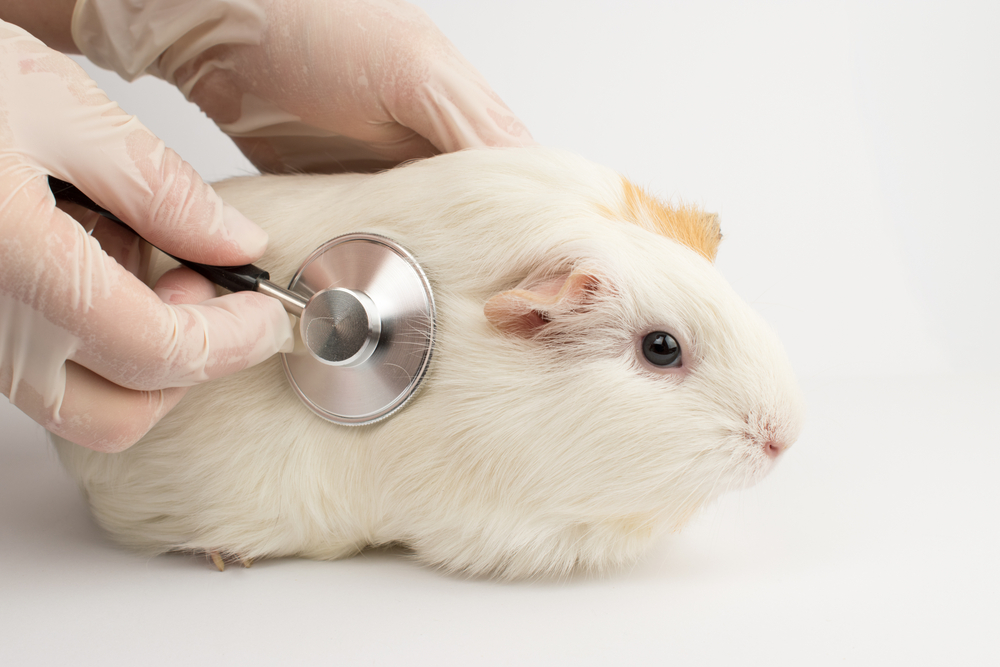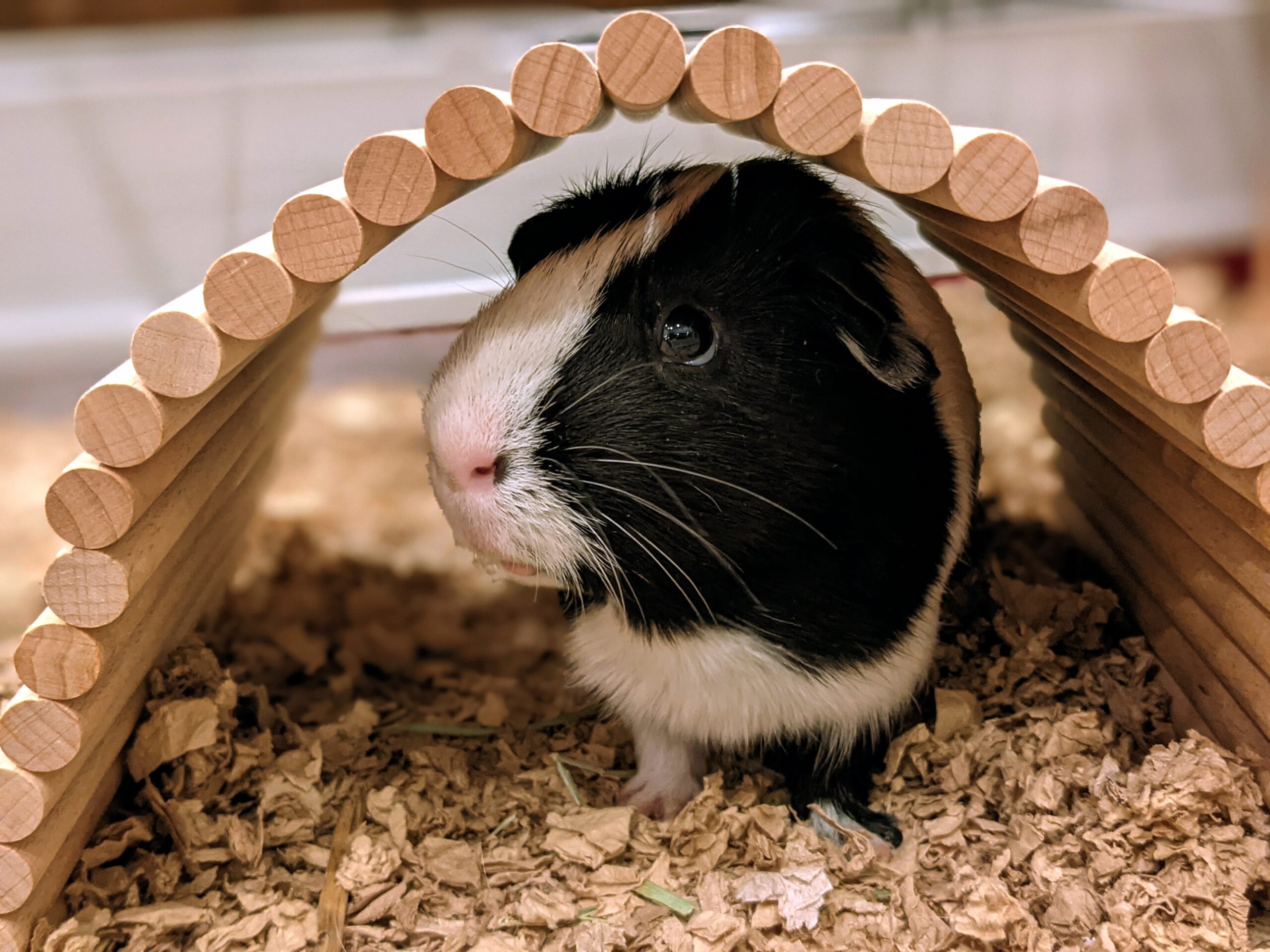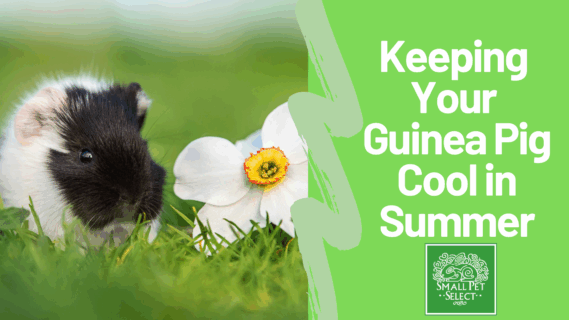In the wild, guinea pigs — or cavies —live in the high-altitude grasslands of the Andes Mountains in regions of Bolivia, Ecuador, and Peru. Those grassy highlands typically stay between 65°F and 75°F, which happens to be the ideal temperature range for your guinea pig too.
In fact, hot weather can be extremely dangerous for piggies and may quickly lead to heat stroke. That’s why it’s so important to help your furry friends stay cool when temperatures start to rise.
Heat Stroke in Guinea Pigs
Because guinea pigs have thick fur and don’t sweat, they can overheat very quickly — and they can’t cool themselves back down, making them highly susceptible to heat stroke.
It is critical to recognize the signs of heat stroke. These include:
- Lethargy or Weakness: Your guinea pig may seem unusually tired, limp, or less responsive than normal.
- Heavy or Rapid Breathing: Look for open-mouth breathing, panting, or labored, noisy breaths.
- Red or Flushed Ears and Feet: These areas may look noticeably pink or red as blood vessels expand to release heat.
- Drooling: Excessive saliva can be a sign your guinea pig is overheating and trying to cool down.
- Stretched-Out Posture: They may lie flat on their side or belly in an effort to release body heat.
- Tremors, Seizures, or Collapse: In extreme cases, overheating can lead to convulsions, loss of consciousness, or collapse.
Heat stroke in guinea pigs can happen within a few minutes and without immediate intervention, it can lead to death.
Heat stroke can occur in guinea pigs within just a few minutes, and without quick action, it can be fatal. If you suspect your guinea pig is overheating, it’s critical to act fast.
Here's what you should do right away:
1. Move to a Cooler Area: Take your guinea pig to a cooler, shaded environment immediately. Get them away from direct sunlight, warm rooms, or any heat source.
2. Cool Them Down Gradually: Avoid sudden temperature changes. Instead, gently lower their body temperature by placing a damp, cool (not ice-cold) towel on them, refreshing it regularly.

3. Keep Them Hydrated: Offer fresh, cool drinking water right away. You can also provide hydrating veggies like cucumber or small pieces of watermelon to help restore fluids.

If your guinea pig has been in the heat and shows any of the following signs, contact your veterinarian immediately:
- Shaking, tremors, or seizures
- Unresponsiveness or loss of consciousness
- Shallow, rapid, or noisy breathing
- Continued weakness or inability to stand after cooling
Because guinea pigs are highly sensitive to heat, and even with first aid, they may still need professional help to fully recover.
Tips to Help Your Guinea Pig Beat the Heat
While overheating is serious for your cavy, implementing a few simple strategies can help your guinea pigs stay cool and avoid the dangers of heat stroke.
1. Keep Their Habitat Cool. Place your guinea pigs’ cage or enclosure in a shaded indoor spot away from windows, direct sunlight, and heat sources.
A room with a ceiling fan or a portable fan can help circulate the air, but be sure the breeze isn’t blowing directly on your piggy. Proper ventilation is a must, so avoid stuffy or enclosed spaces like closets or unventilated laundry rooms.
2. Keep them hydrated. Fresh, clean water should always be available — especially during warm weather. Refill bottles or bowls frequently. If you’re using a bowl, make sure it’s tip-proof. If you use a water bottle, double-check that it’s dispensing properly.
You can also offer water-rich veggies like cucumber, bell pepper, or romaine lettuce for an extra hydration boost. Rinse the produce and give it to them while it’s still damp for some extra hydration. Avoid frozen treats, though. While they might seem refreshing, icy snacks lose some of their nutritional value and can upset your piggy’s tummy.

3. Create Cool Spots to Lounge. Cooling mats made for small animals or cool surfaces like ceramic or marble tiles can help your guinea pig chill out. You can also freeze a water bottle, wrap it in a towel or sock, and place it in their cage. Your piggy will love snuggling up near the cool surface without the risk of direct contact.
4. Provide Ventilated Hides. Guinea pigs love to snuggle and hide no matter the season, so be sure their hiding spots are summer-friendly. Choose wooden hides or open-ended tunnels over plastic ones, which can trap heat.

Your piggy may also burrow into their hay — another reason to make sure they always have unlimited access!
For an extra cooling touch, try draping a damp towel over part of their cage. It creates a shaded nook while still allowing airflow.
5. Limit outdoor time and car rides. If the temperature in the shade is above 75°F, it’s best to keep your guinea pigs indoors. If you do take them outside, aim for early morning or late evening when it’s cooler, and always provide a shaded, well-ventilated area.
Never leave your guinea pig in a parked car — not even for a minute. Cars can heat up dangerously fast. If you need to travel, make sure the carrier has good ventilation and include a cool, damp towel inside to keep them comfortable.
Stay Cool, Stay Safe
When temperatures rise, the safest place for your furry friend is always inside in a cool, well-ventilated space with air conditioning or gentle fan circulation. Also providing fresh water, cool resting spots, and careful monitoring will help your piggy stay comfortable and healthy all summer long.
We are not veterinarians, and none of our information should be construed as veterinary advice.
Before adding any new product, please consult your exotic veterinarian. If your pet is acting unwell and you have concerns for their well being, please contact your vet immediately.






